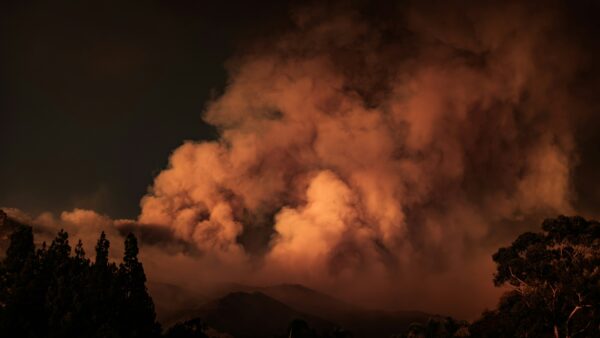A 1.5°C Compatible Carbon Budget for Western Australia
Authors
Ursula Fuentes, Bill Hare, Anna Chapman, Ryan Wilson, Tina Aboumahboub, Himalaya Shrestha, Robert Brecha, Michiel Schaefer. Graphic design: Matt Beer
Share

This study analyses what actions Western Australia needs to take to play its role in global and national efforts to limit warming to 1.5°C. It includes a Paris Agreement 1.5°C compatible carbon budget for all sectors of the Western Australian economy, from 2018 to 2050. The report finds that without acting to reduce emissions, Western Australia is likely to use up its Paris-Agreement 1.5°C compatible carbon budget within 12 years, but rapidly reducing carbon pollution will unlock significant economic opportunities for the state.
CO2 emissions pathway for each of the sectors and energy and industry following transformation is consistent with the Paris agreement in each of those sectors. Total CO2 emissions peak around 2020 and decline to about 37% below 2005 levels in 2030, for total budget of around 950 MtCO2. Excluding the LNG industry, energy and industry CO2 emissions would reduce by about 53% by 2030 below 2005 levels, for a total budget of 716 MtCO2.

GHG emissions pathway for each of the sectors following a transformation consistent with the Paris Agreement in each of those sectors. Total GHG emissions peak around 2020 and decline to about 49% below 2005 levels in 2030, reaching net zero around 2050 contingent upon maintaining a large sink in the LULUCF sector. Consistent with national projections, the LULUCF sink is expected to slowly decline from recent high levels due to saturation of reforestation and other activities. It also assumes vegetation conversion (deforestation in broad terms) leading to emissions is effectively halted by 2025, which would require policy intervention. National projections assume ongoing deforestation losses.

This figure shows the historical trajectory of land use, land use change and forestry (LULUCF) drawn from the June 2019 “State and Territory Greenhouse Gas Inventories 2017” for total LULUCF for all greenhouse gases (mainly carbon dioxide) and deforestation (defined as Forest converted to other land uses). A stylised scenario for the future development of the sector is shown assuming deforestation ending by 2025 and the recent uptake of CO2 due to afforestation reforestation and other processes gradually reduces without further policies, essentially following the relative pathway from the December 2018 national greenhouse gas projections for the Australia wide LULUCF sink, maintained at 2030 levels until 2050.

Western Australia’s Fuel Mix for the Paris Agreement Pathway. Solar and Wind energy become dominant sources from the early 2020s. Coal is phased out before 2030, and gas shortly after 2030.

Growth of LNG production capacity and exports until 2019, with projections until 2030 based upon projected changes/increases in LNG production capacity and assuming 95% of nominal capacity is produced and exported. LNG exports in the reference case are limited to 95% of nominal LNG production capacity.

Growth of LNG processing emissions in Western Australia from natural gas used in liquefaction, CO2 from natural gas reservoirs and fugitive emissions from the LNG manufacturing process until 2019 with projections to 2030. Whilst the intensity of CO2 emissions from direct energy use and liquefaction have remained fairly stable, in terms of tonnes of CO2 per tonne of LNG produced, there has been an increase in CO2 vented from natural gas reservoirs due to the concentration of CO2 in more recently exploited natural gas reservoirs. The reference case projection does not include CO2 CCS at the Gorgon LNG plant, however this is included in the Paris Agreement case and explains the drop of total emissions from 2019 to 2020, when it is assumed that the Gorgon CO2 CCS is capturing 80% of the reservoir CO2 and storing it in a secure geological formation.

Relative role of the abatement options described in the text for reference case LNG demand and see Table 6. Zero emissions are not achieved by 2050. The cumulative emissions remaining between 2018 and 2050 after the assumed mitigation options are applied in this reference scenario is 323 MtCO2e. This amounts to approximately one third of the Western Australian Paris agreement compatible carbon budget for the energy system. There could be more or less emissions left depending upon the rate and scale of the actual mitigation options deployed.

Relative role of different elements of a Paris Agreement LNG demand reduction scenario and mitigation options in reducing emissions from the reference case to close to zero emissions by 2050. The cumulative emissions remaining between 2018 and 2050 after the assumed mitigation options are applied un this Paris Agreement LNG demand scenario is 274 MtCO2e. This amounts to approximately about 29% of the Western Australian Paris agreement compatible carbon budget for the energy system. There could be more or less emissions left depending upon the rate and scale of the actual mitigation options deployed.












